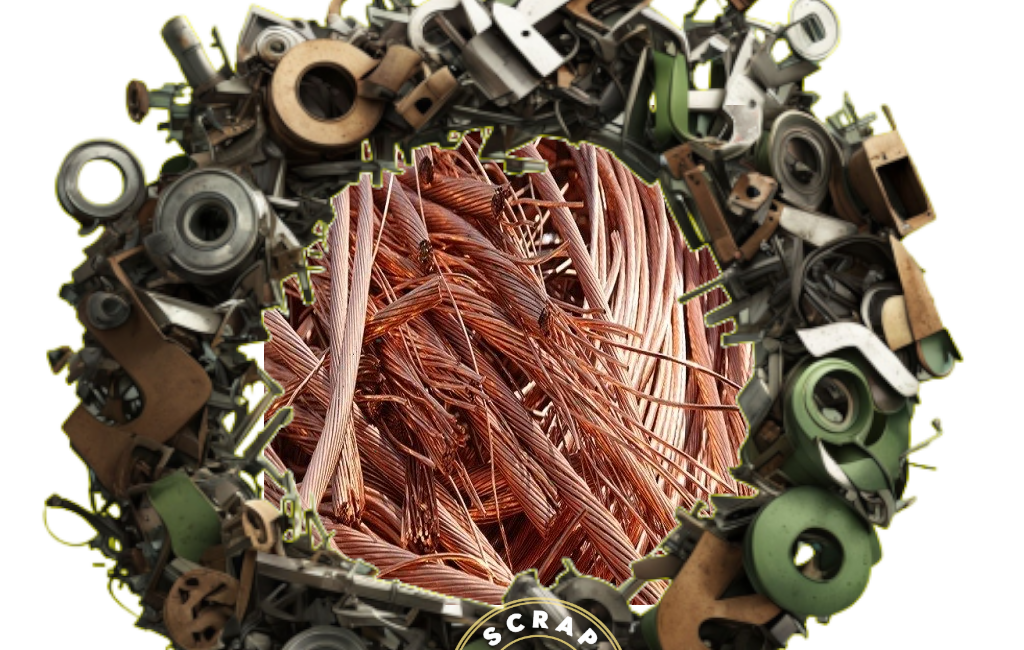Copper Scrap: A Vital Component of Sustainable Recycling
Understanding Copper Scrap
What is Copper Scrap?
Copper scrap refers to discarded or leftover copper materials that can be recycled and reused. It is categorized into various grades based on purity and condition. Copper scrap is a highly sought-after material due to its excellent conductivity, corrosion resistance, and malleability.
Types of Copper Scrap
- Bare Bright Copper Wire: The most valuable type, consisting of clean, uncoated, and unalloyed copper wire.
- #1 Copper: Includes clean copper tubing and wire free of solder and impurities.
- #2 Copper: Contains slight impurities or coatings, such as painted or soldered copper.
- Insulated Copper Wire: Copper wires coated with plastic insulation, requiring additional processing.
- Mixed Copper Scrap: A blend of various copper-containing items.
Sources of Copper Scrap
Construction and Demolition
Copper is widely used in electrical wiring, plumbing, and roofing materials, making construction sites and demolished structures significant sources.
Electrical and Electronics
Discarded electrical appliances, cables, and electronic devices contain substantial amounts of copper.
Automotive Industry
Old vehicles, particularly electric and hybrid cars, are rich in copper wiring and components.
Industrial Machinery
Decommissioned industrial equipment and machinery contribute to copper scrap availability.
Household Items
Items such as cookware, pipes, and home wiring provide additional sources of scrap copper.
The Importance of Copper Scrap Recycling
Sustainability
Recycling copper reduces the need for mining virgin copper ore, conserving natural resources and minimizing environmental impact.
Energy Efficiency
Producing copper from recycled scrap requires up to 85% less energy than extracting and refining it from raw ore.
Economic Value
Copper scrap is highly valuable, creating a profitable market for individuals and businesses.
Industrial Demand
Copper is indispensable in industries such as construction, electronics, and transportation, where recycled copper fulfills a significant portion of demand.
The Copper Scrap Recycling Process
Step 1: Collection
Copper scrap is collected from sources such as construction sites, scrapyards, and recycling centers.
Step 2: Sorting and Grading
Scrap is sorted into categories based on purity and contamination levels. Higher-grade copper fetches higher prices.
Step 3: Shredding and Melting
Scrap is shredded and then melted in furnaces to remove impurities and refine the metal.
Step 4: Purification
Advanced purification techniques, such as electrolysis, ensure the copper is free of contaminants and ready for reuse.
Step 5: Repurposing
Purified copper is molded into sheets, wires, or other forms, re-entering the supply chain for manufacturing.
Economic Benefits of Recycling Copper Scrap
Revenue Generation
Copper scrap recycling is a lucrative business, providing income opportunities for collectors, processors, and manufacturers.
Cost Savings
Industries benefit from lower costs when using recycled copper instead of virgin material.
Job Creation
The recycling industry creates jobs in collection, sorting, processing, and transportation.
Market Stability
Recycling ensures a steady supply of copper, reducing dependence on fluctuating raw material markets.
Environmental Benefits of Recycling Copper Scrap
Reduction in Mining
Recycling reduces the need for mining, preserving landscapes, and minimizing deforestation.
Lower Carbon Footprint
Recycling emits significantly fewer greenhouse gases compared to mining and processing virgin copper.
Waste Management
Copper scrap recycling diverts waste from landfills, contributing to cleaner environments.
Resource Conservation
Recycling helps conserve finite natural resources for future generations.
Challenges in Copper Scrap Recycling
Contamination Issues
Scrap often contains impurities such as insulation, paint, or mixed metals, complicating the recycling process.
Theft and Illegal Trade
Copper’s high value makes it a target for theft and unauthorized trading, disrupting legitimate recycling operations.
Price Volatility
Fluctuations in copper prices impact the profitability of recycling operations.
Energy Costs
While recycling uses less energy than mining, the melting and purification processes still require substantial energy input.
Innovations in Copper Scrap Recycling
Advanced Sorting Technologies
Technologies such as X-ray fluorescence (XRF) and automated sorting systems improve the efficiency of separating copper from contaminants.
Closed-Loop Recycling Systems
These systems ensure that copper scrap is continuously recycled within industries, reducing waste and increasing resource efficiency.
Eco-Friendly Purification Methods
Innovations in chemical and electrochemical purification reduce environmental impact while enhancing copper quality.
Blockchain for Transparency
Blockchain technology tracks the origin and processing of copper scrap, ensuring ethical and sustainable recycling practices.
Global Trends in Copper Scrap Recycling
Top Producers and Consumers
Countries like China, the United States, and Germany are major players in copper scrap production and recycling.
Export and Import Dynamics
Global trade in copper scrap is influenced by demand in manufacturing hubs and regulations on waste exports.
Sustainability Goals
Governments and corporations are integrating copper scrap recycling into broader sustainability strategies.
The Future of Copper Scrap Recycling
Increased Demand for Recycled Copper
As industries prioritize sustainability, the demand for recycled copper is expected to grow.
Government Incentives
Policies promoting recycling, such as tax breaks and grants, will support the copper scrap industry.
Technological Advancements
Emerging technologies will make recycling processes more efficient and cost-effective.
Global Collaboration
International cooperation can address challenges such as illegal trade and price volatility.
Conclusion
Copper scrap is a valuable asset in the journey toward a sustainable future. Its recyclability reduces environmental impact, conserves natural resources, and supports economic growth. While challenges like contamination and price volatility remain, innovations and policy support offer promising solutions. By prioritizing copper scrap recycling, we can ensure a steady supply of this essential metal while fostering a cleaner, greener planet.

Leave a Comment